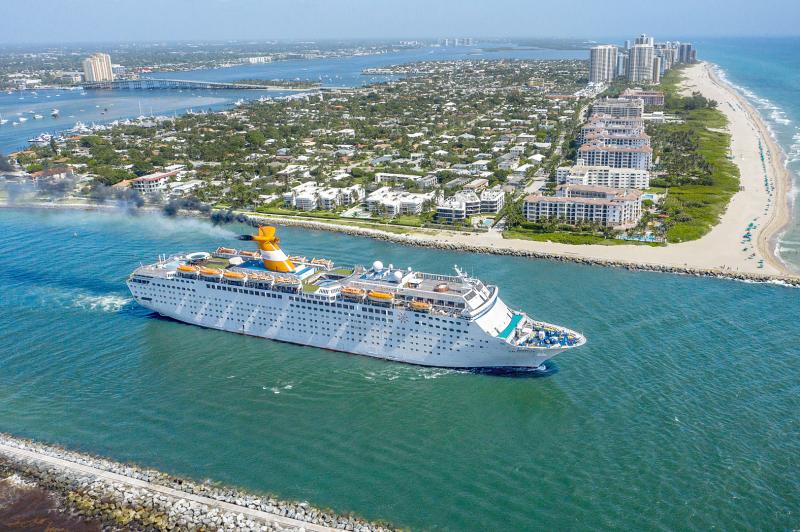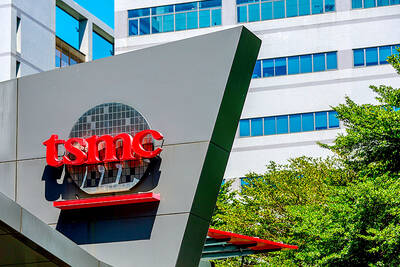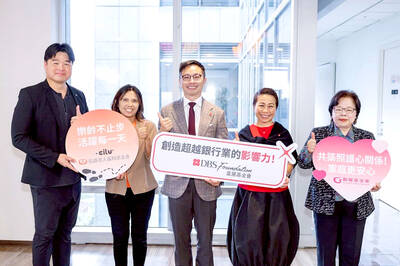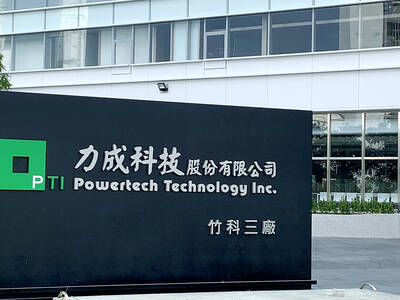Hopes that the world’s cruise industry would be gathering steam again in time for the holiday season that begins this month are sinking, as some ports remain closed and authorities impose new COVID-19 health rules.
With the spread of the novel coronavirus in Europe slowing in the past few months many had expected that the height of the Mediterranean cruise season could be salvaged.
The reopening of six key Greek tourist ports on Saturday last week for cruise ship lines fueled such hopes.

Photo: AP
However, Monday’s decision by industry leader Carnival Cruise Line to postpone its first cruises in months due to the lack of a green light from Italy shows that many difficulties remain.
On the same day, Norwegian operator Hurtigruten AS suspended its expedition trips after dozens of cases were detected among the crew and passengers after two cruises on one vessel last month.
Norway then slapped restrictions on popular cruises to its fjords, with a second ship ordered into quarantine.
However, Europe’s main cruise operators, Costa Cruises and MSC Cruises Ltd, are not giving up.
“We are ready, we have worked very hard,” MSC chief executive officer Gianni Onorato said on Tuesday as the firm presented new health and safety measures.
“We are waiting for the green light from Italian authorities” and “hope to be able to announce some very good news within a few days,” he added.
For its part, Costa Cruises, which is part of the Carnival group, told reporters that it is “working on plans for a gradual resumption of cruises when the authorities of the home and destination ports say it is possible to do so.”
“There are several signals that seem to be favorable for the second half or even the second week of August,” said Erminio Eschena, head of Clia France, an association that groups together the main cruise lines.
Cruise lines have been working hard to develop new health protocols.
They have tried to anticipate each detail with repeated health checks for passengers and crew, as well as beefed-up medical teams.
Costa Cruises’ new guidelines say all passengers are subject to a health check as they board and that “all crew members are subject to daily body temperature checks and their state of health is monitored constantly,” according to its Web site.
Meanwhile, MSC plans daily temperature checks of passengers and crew, and said that physical distancing would be possible thanks to a reduction to 70 percent of passenger capacity.
Both plan to reduce the size of groups for activities.
“The measures taken go beyond the recommendations of bodies, such as the WHO or the EU,” Eschena said.
However, Hurtigruten had testing and quarantine rules in place, which apparently led the ship’s doctor to discount the possibility that a crew member had contracted COVID-19.
“They told me everyone had been tested and all the crew had respected the quarantine rules,” the doctor, Karl-Borre Andersen, told Norwegian daily Verdens Gang.
With the novel coronavirus known to spread in confined spaces, national authorities have been skittish.
Many remember the ordeal of the Diamond Princess and its 4,000 passengers as it spent the month of February in quarantine off Japan and the number of infections climbing to 700.
Another fresh memory is the case of the SeaDream 1, a second cruise ship ordered into quarantine by Norway after a Danish passenger who had disembarked several days previously tested positive for the novel coronavirus.
“We are all shut indefinitely in our own cabins. Room service is going to be busy and there is still 10 days to go” in the quarantine, Rune Vidar Nordum wrote on Twitter.
Champagne and canapes were helping ward away despair for the moment.
“We are well and the captain and crew are taking good care of us,” he tweeted, adding a picture of two flutes of bubbly and a plate of mini-sandwiches.
Experts wonder whether the industry would be able to adapt to the pandemic before there is a cure.
“The industry presents a clear risk as have shown certain inextricable situations, and it affects primarily senior citizens who are more fragile,” said Didier Arino, head of the Protourisme consulting firm in Paris.
“For an industry which has enjoyed nearly uninterrupted growth for 20 years it is difficult to imagine a real recovery until there is a vaccine,” he said.

RUN IT BACK: A succesful first project working with hyperscalers to design chips encouraged MediaTek to start a second project, aiming to hit stride in 2028 MediaTek Inc (聯發科), the world’s biggest smartphone chip supplier, yesterday said it is engaging a second hyperscaler to help design artificial intelligence (AI) accelerators used in data centers following a similar project expected to generate revenue streams soon. The first AI accelerator project is to bring in US$1 billion revenue next year and several billion US dollars more in 2027, MediaTek chief executive officer Rick Tsai (蔡力行) told a virtual investor conference yesterday. The second AI accelerator project is expected to contribute to revenue beginning in 2028, Tsai said. MediaTek yesterday raised its revenue forecast for the global AI accelerator used

Taiwan Semiconductor Manufacturing Co (TSMC, 台積電) has secured three construction permits for its plan to build a state-of-the-art A14 wafer fab in Taichung, and is likely to start construction soon, the Central Taiwan Science Park Bureau said yesterday. Speaking with CNA, Wang Chun-chieh (王俊傑), deputy director general of the science park bureau, said the world’s largest contract chipmaker has received three construction permits — one to build a fab to roll out sophisticated chips, another to build a central utility plant to provide water and electricity for the facility and the other to build three office buildings. With the three permits, TSMC

The DBS Foundation yesterday announced the launch of two flagship programs, “Silver Motion” and “Happier Caregiver, Healthier Seniors,” in partnership with CCILU Ltd, Hondao Senior Citizens’ Welfare Foundation and the Garden of Hope Foundation to help Taiwan face the challenges of a rapidly aging population. The foundation said it would invest S$4.91 million (US$3.8 million) over three years to foster inclusion and resilience in an aging society. “Aging may bring challenges, but it also brings opportunities. With many Asian markets rapidly becoming super-aged, the DBS Foundation is working with a regional ecosystem of like-minded partners across the private, public and people sectors

BREAKTHROUGH TECH: Powertech expects its fan-out PLP system to become mainstream, saying it can offer three-times greater production throughput Chip packaging service provider Powertech Technology Inc (力成科技) plans to more than double its capital expenditures next year to more than NT$40 billion (US$1.31 billion) as demand for its new panel-level packaging (PLP) technology, primarily used in chips for artificial intelligence (AI) applications, has greatly exceeded what it can supply. A significant portion of the budget, about US$1 billion, would be earmarked for fan-out PLP technology, Powertech told investors yesterday. Its heavy investment in fan-out PLP technology over the past 10 years is expected to bear fruit in 2027 after the technology enters volume production, it said, adding that the tech would